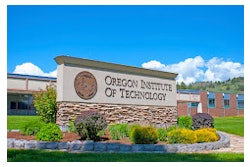Success for all students in higher education cannot simply be achieved with a “one-size-fits-all approach,” according to a new equity toolkit from Achieving the Dream (ATD). Francesca Carpenter
Francesca Carpenter
“To be clear, ensuring equity requires that we disavow the one-size-fits-all approach and that we intentionally consider institutional context and capacity for engaging in equity-minded work,” the report stated.
Instead, decision-makers and those seeking to improve equity at their two-year institutions must engage in thorough reflection of their own schools and involve collaboration from multiple departments and levels.
"Equity is everyone's job at an institution,” said Francesca Carpenter, director of equity initiatives at ATD and contributor to the toolkit. “So, it's important for a team or committee of people to look at the policies together in community and in conversation, so that they can then make the changes that are necessary."
In pursuit of this goal, ATD’s open-access toolkit is organized along eight core principles – each with its own assessment criteria, guiding questions, and additional resources and information – which can be used either together or individually.
"It's a comprehensive toolkit that goes beyond just looking at data and moves the understanding of data into action and insights. And it gives the tools to move into action," said Dr. Karen Stout, president and CEO of ATD.
Before tackling systematic issues, leaders must develop an equity mindset and set the tone for the school’s work, the report stated. This mindset involves people being race-conscious, aware of exclusionary practices, and willing to take responsibility for the success of students.
The road to institutional equity is not straight but does require resiliency, the report stated.
“Core to an equity mindset is a growth mindset, the belief that skills can be improved over time, and that improving those skills is the goal of the work people do,” the report authors wrote. “People with a growth mindset believe that they can learn, develop, and grow. When individuals embrace a growth mindset, they accept that they will make mistakes, they own mistakes made, and they understand that mistakes are part of the learning and growth process — not an indictment on their character — and even after making mistakes, they continue in their equity journey.”
Identifying problematic systems already in place is a key component on the road to improvement. The second principle calls on practitioners to interrogate “institutional practices, structures, and policies” – those which might be longstanding, ingrained, and part of tradition – and subsequently rewrite or replace the ones deemed inequitable.
Syllabus rules that only allow for a set number of absences may hinder the academic pursuits of students who are also parents or working full-time, Carpenter said.
"A lot of policies and practices are set up that we think have to stay in place because they have a legacy at our institution,” Carpenter said. “But once we look closely at what they are, then we start to ask different questions. Are these benefitting students? And if so, what students are they benefitting? Are these policies or practices harming students? And if so, who are they harming and what can we do to change them?"
Other principles in the toolkit call for efforts such as providing holistic supports for students, designing pedagogy to be aware of and center students’ lived experiences and backgrounds, incorporating input from faculty, staff, and students, and partnering with local communities.
Faculty play a key role in understanding and responding to student needs, the report authors wrote. Judging based on occurrences such as late or incomplete assignments or missed classes, faculty can notice issues early and act accordingly.
“[They are] one of the few people on your campus who have a regular (often long-term) relationship with students,” the report wrote. “When equipped with information about the availability of support services and how to access them, faculty can refer students to needed supports before a crisis point is reached.”
They can also help notify students of services provided by their school, such as food pantries.
"What the toolkit will help an institution do is build a common understanding of the students that they're serving and the student experience, so that they can design a combination of universal and targeted interventions that help all students succeed,” Stout said. “Once an organization really understands their students, that's all that's required to build common purpose around a transformation agenda."
Case studies of schools nationwide – including Austin Community College, Chattanooga State Community College, and Coahoma Community College – doing the work to improve equity are featured in the toolkit as well. The schools’ practices are contextualized along the eight ATD principles, providing clear examples for other institutions to potentially emulate.
The toolkit has been in the works for more than two years, but the knowledge in it goes back farther, Stout said.
"It represents 20 years of learning and insights from our colleges about improving student success and completion and also addressing equity gaps within that completion journey," Stout said.


















